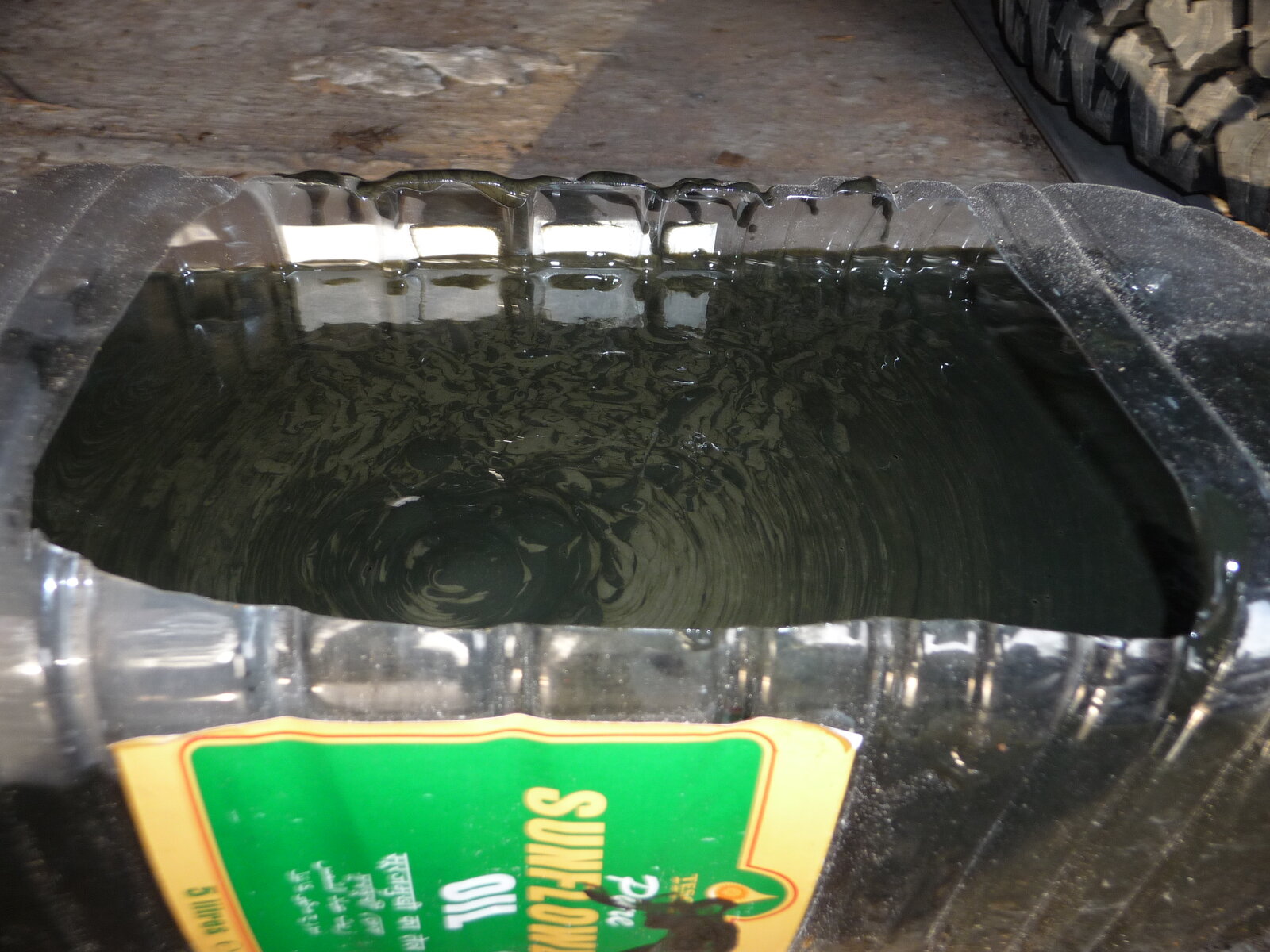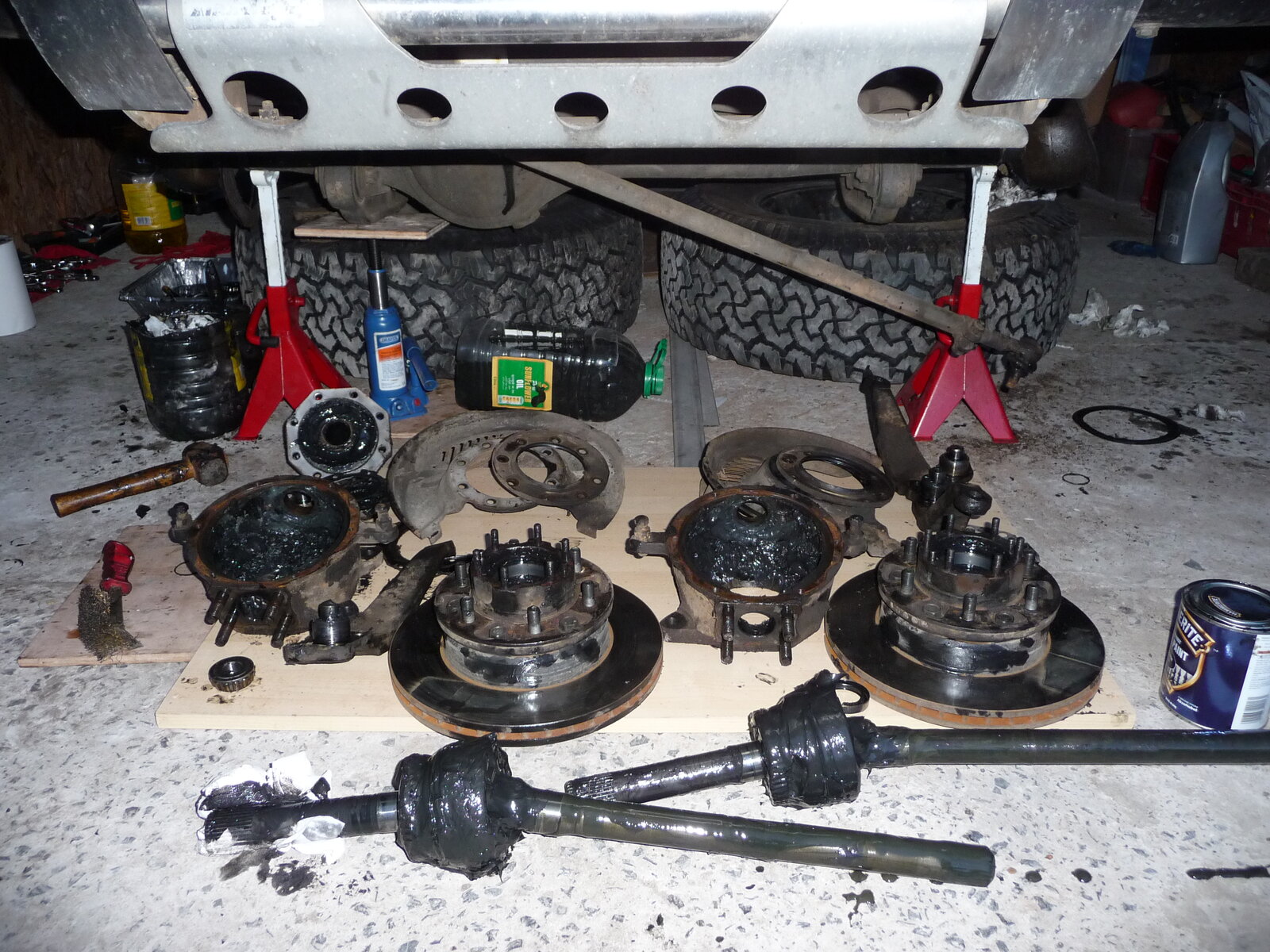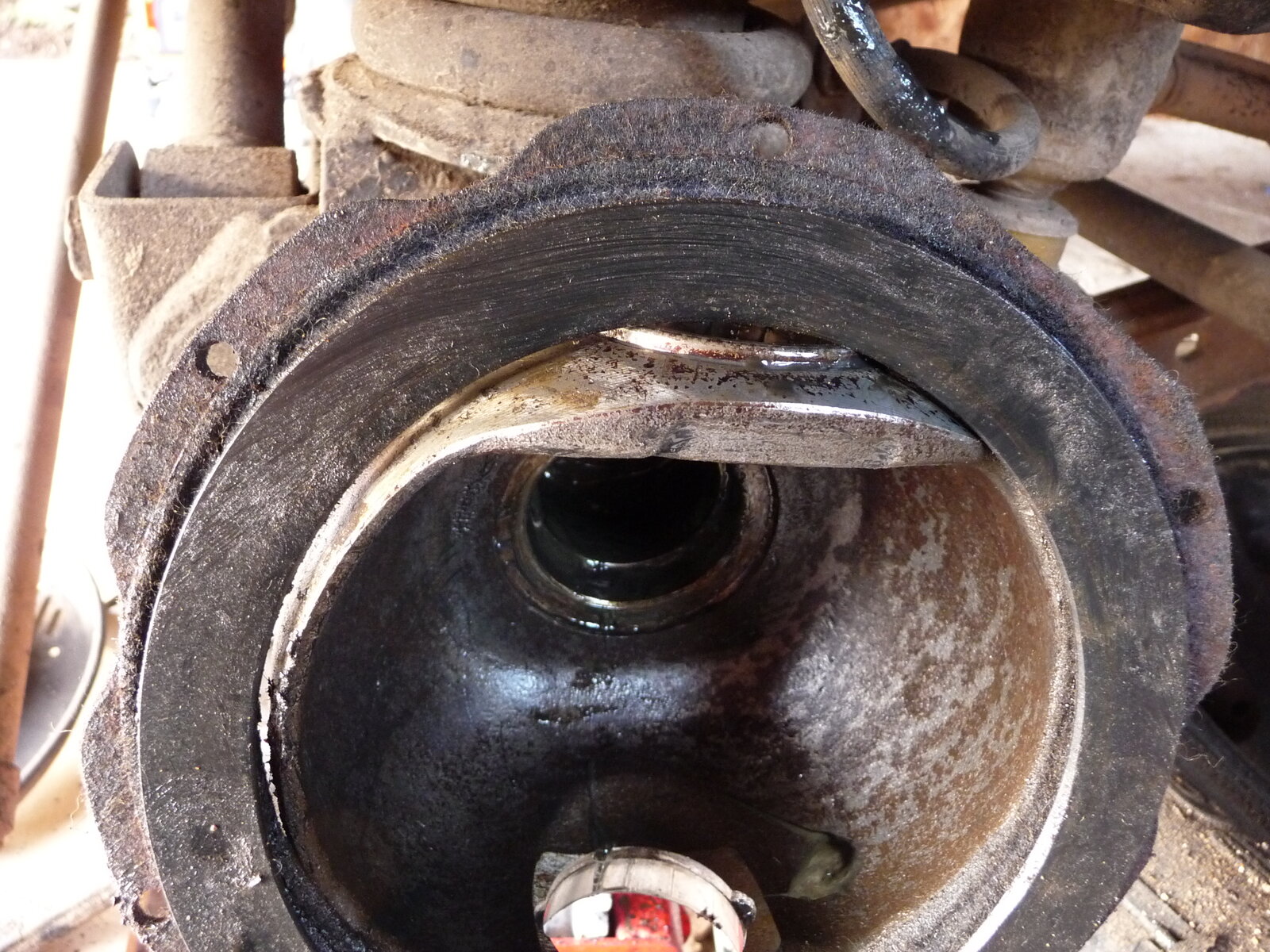ByronJ
Well-Known Member
- Joined
- Jul 7, 2012
- Messages
- 349
- Country Flag
Inspired by Chris's recent article on his front axle I decided it was time I serviced the front axle on my 1991 80 series. I read Andrew's very helpful thread 'Rebuilding the 80 series front axle' and on Sunday 16th of February 2014 started the job; yes I know a Sunday re-build is pushing the boundaries a bit but it was a big help that it was the second sunny day this year.
This axle was rebuilt at Overland Cruisers in July 2012 with new seals and bearings. In the 18 months since I have covered a little over 20, 000 miles, about 20% of that on bad roads / no roads. Nevertheless I was not expecting to find any problems other than needing to clean up and repack the knuckle with grease.
Although I am a beginner at this kind of stuff I found I was enjoying myself, even after it took me 45 minutes to remove a corroded split pin . There are some questions sprinkled through this post. They are mainly there to remind me to investigate these things further but I would be very grateful if anyone cares to shed some light on them for me. In addition if I am doing things wrong then please feel free to point me in the right direction.
. There are some questions sprinkled through this post. They are mainly there to remind me to investigate these things further but I would be very grateful if anyone cares to shed some light on them for me. In addition if I am doing things wrong then please feel free to point me in the right direction.
I was a little shocked when I removed the drain plug from the differential and nothing happened! Oh no! Was it running dry? Was it because I had left the wheels on ? After a few seconds thick green gunk started to ooze out and eventually I had nearly 5 litres of muck in the pan. I guess the inner axle seals have failed? Ah well.
? After a few seconds thick green gunk started to ooze out and eventually I had nearly 5 litres of muck in the pan. I guess the inner axle seals have failed? Ah well.

After a few hours dismantling my garage and car ended up looking like this.

The smaller parts (at least the ones I did not lose) are sitting in pans of diesel. So I have a fair bit of cleaning up ahead after I order up new seals etc. There was plenty of runny grease inside the knuckles yet the inside face of the knuckle upper and lower swivel races have a light rust discolouration on their inner faces, otherwise the bearings look fine. The inner faces of the cannon balls also have a light rust discolouration.

It looks to me as if water is prevented from entering the inside face of the cannon ball only by the felt and rubber washers running along the outside of the ball. This is not a great seal and so the system looks to be relying on the grease packed into the ball to repel water. I assume that, over time, the moly grease absorbs a little water allowing some corrosion to occur. As my grease is contaminated with oil will that makes water ingress more likely?
Please ignore the following paragraph as I was mistaken (that is the kindest way I can put it ) - I have left the sentence there so other peoples comments on it make sense...
) - I have left the sentence there so other peoples comments on it make sense...
"The swivel races did not need to be knocked out at all. Is this normal or an indication that the pre-load on the races was insufficient?"
The OUTER race did need knocking out...
After I had removed the steering linkage and shafts I rotated the knuckle to see how it felt. It moved smoothly enough but there was a noticeable difference as the knuckle passed through the straight ahead position, it felt like a lever when passing through a detent (light lock position). Is this normal or an indication of some wear somewhere?
For anybody inexperienced reading this I found the following helpful:
I used a 750mm breaker bar to start the larger nuts. This was a joy to use, allowing me to starts the nuts easily and under control. None of that hammering, or using a (slippery) ring spanner to extend, the socket bar.
After the differential had stopped dripping I jacked up the left hand side of the axle (long shaft) to remove the wheel and noticed loads more gunk started dripping out of the diff as the side of the axle was lifted up. I left it like that until it was time to work on the right hand side. On re-assembling I intend to put the left hand wheel back on first so that when I lower the car down onto that wheel any remaining gunk in the right hand (short shaft) will be encourage to drip out.
Now I need to order some seals from Toyota and find a reasonable source for Koyo bearings - Toyota want an arm and a leg for bearings.
This axle was rebuilt at Overland Cruisers in July 2012 with new seals and bearings. In the 18 months since I have covered a little over 20, 000 miles, about 20% of that on bad roads / no roads. Nevertheless I was not expecting to find any problems other than needing to clean up and repack the knuckle with grease.
Although I am a beginner at this kind of stuff I found I was enjoying myself, even after it took me 45 minutes to remove a corroded split pin
I was a little shocked when I removed the drain plug from the differential and nothing happened! Oh no! Was it running dry? Was it because I had left the wheels on

After a few hours dismantling my garage and car ended up looking like this.

The smaller parts (at least the ones I did not lose) are sitting in pans of diesel. So I have a fair bit of cleaning up ahead after I order up new seals etc. There was plenty of runny grease inside the knuckles yet the inside face of the knuckle upper and lower swivel races have a light rust discolouration on their inner faces, otherwise the bearings look fine. The inner faces of the cannon balls also have a light rust discolouration.

It looks to me as if water is prevented from entering the inside face of the cannon ball only by the felt and rubber washers running along the outside of the ball. This is not a great seal and so the system looks to be relying on the grease packed into the ball to repel water. I assume that, over time, the moly grease absorbs a little water allowing some corrosion to occur. As my grease is contaminated with oil will that makes water ingress more likely?
Please ignore the following paragraph as I was mistaken (that is the kindest way I can put it
"The swivel races did not need to be knocked out at all. Is this normal or an indication that the pre-load on the races was insufficient?"
The OUTER race did need knocking out...
After I had removed the steering linkage and shafts I rotated the knuckle to see how it felt. It moved smoothly enough but there was a noticeable difference as the knuckle passed through the straight ahead position, it felt like a lever when passing through a detent (light lock position). Is this normal or an indication of some wear somewhere?
For anybody inexperienced reading this I found the following helpful:
I used a 750mm breaker bar to start the larger nuts. This was a joy to use, allowing me to starts the nuts easily and under control. None of that hammering, or using a (slippery) ring spanner to extend, the socket bar.
After the differential had stopped dripping I jacked up the left hand side of the axle (long shaft) to remove the wheel and noticed loads more gunk started dripping out of the diff as the side of the axle was lifted up. I left it like that until it was time to work on the right hand side. On re-assembling I intend to put the left hand wheel back on first so that when I lower the car down onto that wheel any remaining gunk in the right hand (short shaft) will be encourage to drip out.
Now I need to order some seals from Toyota and find a reasonable source for Koyo bearings - Toyota want an arm and a leg for bearings.
Last edited:






 . I just realised the bearings are in two parts. It was the race containing the rollers that dropped out. The cone they run in is still firmly in the hub - oops.. Sometimes I wonder how I get through the day
. I just realised the bearings are in two parts. It was the race containing the rollers that dropped out. The cone they run in is still firmly in the hub - oops.. Sometimes I wonder how I get through the day  .
.